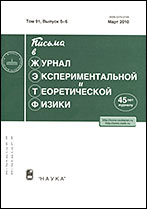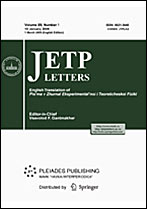|
MISCELLANEOUS
Inertial reciprocating photomotor
V. M. Rozenbaumab, I. V. Shapochkinaba, L. I. Trakhtenbergcd
a DUT-BSU Join Institute, Dalian University of Technology, Dalian, 116024 People’s Republic of China
b Belarusian State University, Minsk, 220050 Belarus
c Moscow State University, Moscow, 119991 Russia
d Semenov Institute of Chemical Physics, Russian Academy of Sciences, Moscow, 119991 Russia
Abstract:
We present a theory for an inertial reciprocating Brownian motor driven by deterministic dichotomous fluctuations in the parameters of a Brownian particle and confinement potentials (which can be created by optical methods). In the case of parabolic potentials, equilibrium and non-equilibrium fluctuations turn out to be uncoupled; this fact makes it possible to reduce the solving the Klein–Kramers equation to a purely mechanical-dynamic problem. The inclusion of inertial effects leads to a nonmonotonic dependence of the average velocity of the motor (which characterizes the efficiency of converting the input energy due to potential fluctuations into the energy of the reciprocating motion) on the fluctuation frequency, as well as to resonant processes in the limit of small values of the friction coefficient.
Received: 11.10.2022
Revised: 30.10.2022
Accepted: 03.11.2022
Citation:
V. M. Rozenbaum, I. V. Shapochkina, L. I. Trakhtenberg, “Inertial reciprocating photomotor”, Pis'ma v Zh. Èksper. Teoret. Fiz., 116:12 (2022), 863–870; JETP Letters, 116:12 (2022), 902–908
Linking options:
https://www.mathnet.ru/eng/jetpl6830 https://www.mathnet.ru/eng/jetpl/v116/i12/p863
|


| Statistics & downloads: |
| Abstract page: | 54 | | References: | 21 | | First page: | 11 |
|





 Contact us:
Contact us: Terms of Use
Terms of Use
 Registration to the website
Registration to the website Logotypes
Logotypes







 Citation in format
Citation in format 